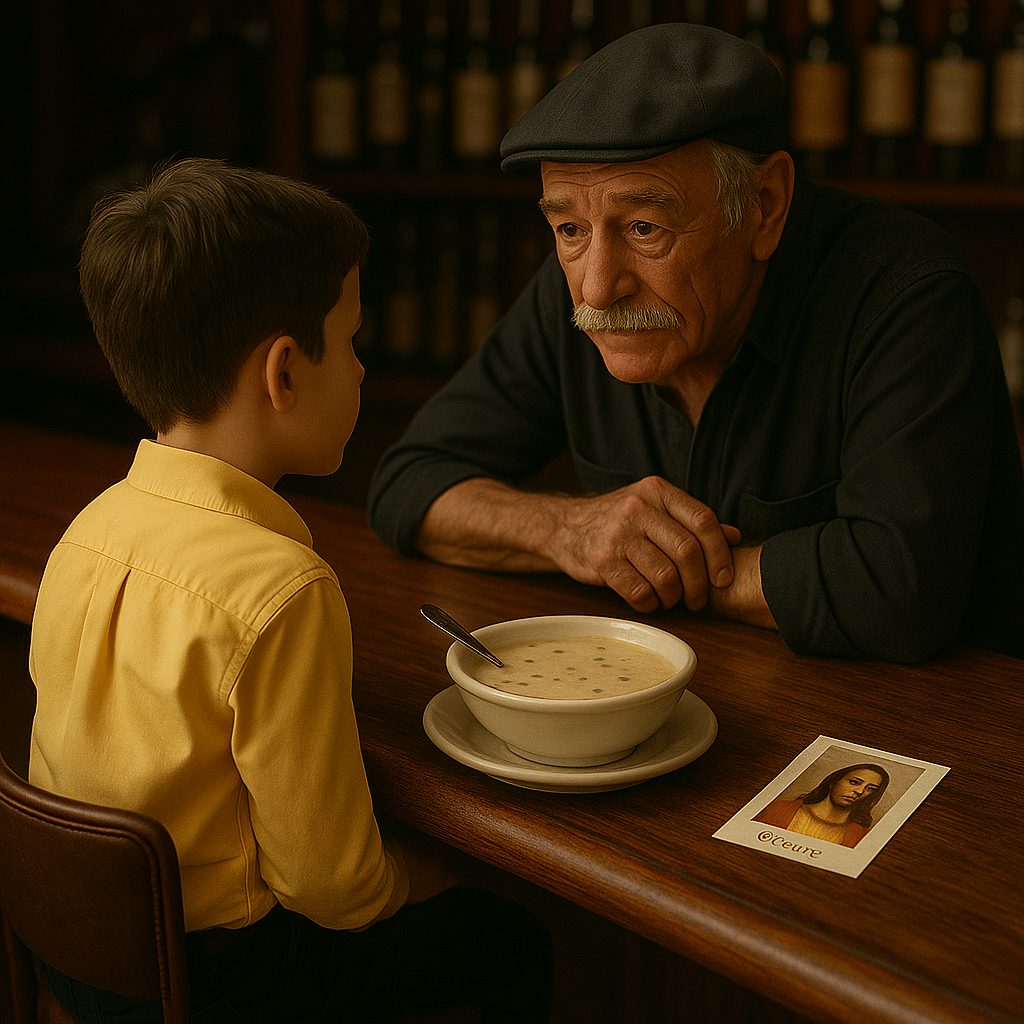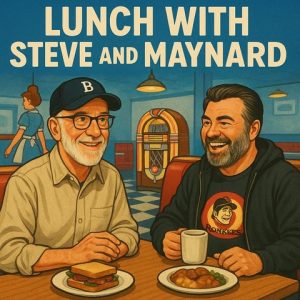It was morning. By the sun and shadow angles painted across my bedroom wall, it seemed like it must be late. Did my Mother actually let me sleep in? She never let me sleep in, not even on weekends. “Time to get up,” she would softly say as she opened my bedroom door at 7 a.m. “How come, why, for what?” I would counter. “It’s time to start the day!” would be the only response.
I had turned 10 that February and now lay basking in morning summer sunlight in my second-floor bedroom in Bucksport, Maine. My Dad had bid on a big paper mill job there and, much to his surprise, had been awarded the contract. This one job would double his small company’s annual revenue. He told me later in life that after he and the vice president of Northeast Constructors left the meeting, they got into their car, looked at each other, and said, “What do we do now?”
As I lay in bed thinking my Mother must be sick or maybe kidnapped, I heard her frantically call from the bottom of the stairs, “Steve, time to get up! Hurry up, you’re going to be late for Sunday school!” “Oh God! I mean, geez,” I thought. I forgot it was Sunday. “Why do I have to go to church when no one else does?” I wondered. Dad never went. Something about he needed to sleep in on the only day he could. Mom used to go, but that had changed. Thinking back now that I’m a grown-up myself, that hour with me out of the house would have been perfect for a husband and wife to, you know, have some alone time on a Sunday morning. Regardless of the reason, now it seemed I was the lone sacrificial offering from the house of Rouse. “Are you up?” came a bellow from below. “YES!, I said, like a kid who didn’t want to go to church.
Dressed and ready, I rumbled down the stairs. “Here’s an apple,” she said. “I guess the power went out or something. My alarm never went off. Come on, we’ve got to go!” We ran out of the house and got into the car parked in front of our rented home on the steep incline of Pine Street. My Mother put the car in drive and pressed down on the accelerator. The car barely moved. “Damn it, ah darn it!’ she corrected herself. “Jeez, Mom,” I said, “I’m on my way to church for chrissakes.” “What did you say?” She asked, really not paying attention. “Ah, crab cakes. Yeah, yeah, they’re having mini crab cakes after the service.” She was so flustered trying to get the car to move with the emergency brake on; luckily, she had missed my slip.
As we drove to church, I mindlessly polished the breakfast apple on my crisp, clean yellow church shirt. Then, as we approached Church Lane, I happened to glance down and noticed a brownish stain! I quickly turned my body to look out the car window so she couldn’t see what I had done. If she saw the stain, we would have to turn around, go home, and get another clean yellow shirt. My Mother always bought me clothes that were either yellow and brown or brown and yellow. In fact, much of the interior of our house, back in Northern New York State, where we lived, was a combination of yellow and brown or brown and yellow. I discovered years later, after undergoing a Color Me Beautiful analysis, that yellow and brown were the colors that were the worst for my complexion. I’m a winter, by the way. Intense colors like blacks, whites, blues, and purples were best for me, not the ungodly brown and yellow I was forced to wear throughout my entire childhood.
Anyway, I thought it would be easier and less stressful to turn away in the car, fold my arms over my chest while exiting the vehicle, and do a half-hearted wave without moving my arms, which is precisely what I did. After all, I had a plan for the next hour, and it did not involve church. I waited in front of the sanctuary until she turned the corner onto Middle Street, and my hour of freedom was underway. Munching down on my breakfast apple, I started down the hill to Main Street.
Of course, there were only a few places open on Sunday morning in 1961. The drugstore was one of them. I walked through the door and headed directly to the candy display rack, which featured a couple of boxes of Topps baseball cards. Each box held probably 25 packs of cards—5 or 6 cards to a pack, along with a nice-sized flat piece of pink bubble gum. You could tell how long a pack had been around depending on the condition of the gum. If the flat rectangle of gum broke into shards when picked up, it had been around for a while. You had a fresh from-the-factory pack if the gum still had some sponginess and a little give. I purchased many nickel packs over the years and gained extensive knowledge about the baseball card business. As the curator of Bucksport’s only baseball card museum, one of my many childhood entrepreneurial endeavors, I considered myself an expert in the field. I would have been happy to share my depth of knowledge and give a tour of my gallery with baseball cards displayed on beautiful cardboard boxes if only I could have rustled up a visitor.
.
I made no purchase at the drugstore. I walked out and immediately did an about-face, then sprinted back into the store and headed for the tall greeting card display. Mrs. Webster, who lived with her husband Tom across the street from us, was getting out of her car right in front of me! She didn’t see me. I could only hope she wasn’t coming into the drugstore. I looked up from behind the card display as she walked through the door. Now, the woman who had coffee with my Mother practically every morning was coming my way. Could I double back and get out the door without being seen? Maybe I could find the department I knew she wouldn’t go in and hide, like toys, neck braces, or canned bundt cakes. I’m a 10-year-old kid; how do I know what department a grown woman will or will not visit? My mind was racing. Do women read? Should I head to the magazine rack and bury my head in a copy of Popular Mechanics? She was coming towards me to look at cards. I quickly did an end around the tall display case and headed out the door unseen. Whew, I had gotten away. Wow, what a rush! I could hear my heart pounding in my ears, and I’m pretty sure it was the first time I noticed nervous perspiration in my armpits. I needed to regroup, pull myself together, and calm down, so I headed to the Jed Prouty Tavern.
Being a history buff, even at a young age, I knew the tavern had plenty of it. Built in 1780 as a large two-family home, it was converted into a pub and inn in 1820. It hosted many luminaries, such as presidents Martin Van Buren and William Henry Harrison. And, now, it was about to host me, Little Stevie Rouse. The long wooden front porch had two separate entrances. The door on the left read “Tavern”. The door on the right read “Dining.” I chose the one on the left and pushed my way through the saloon doors. Two guys were at the bar having a beer, and a younger couple was sitting at one of the tables eating breakfast. I figured it would be weird to sit at a table all by myself, so I sidled up to the bar, climbed up on a bar stool, and took a look around the place. It was old but cool. An older man approached me from behind the bar as I scanned the menu I’d slid out from the metal napkin holder. “What can I git ya they-ah?” He asked. The Downeast accent was still prevalent at the time. “I’ll have a bowl of clam chowder, please,” I replied. “Good choice,” he said. “The chowdah heaah is wicked goud!” Before he put in my order, he leaned in closer to me and lowered his voice,” ya got somthin in yah pohcket to pay fa the chowdah?” “I sure do,” I said, whipping out my church collection envelope and slapping it down on the bar. He raised his bushy eyebrows and gave me a nod and a wink.
I figured I had a 10-minute walk back to church to meet my Mother, which gave me about 20 minutes to get my order, eat, pay, and scamper back up the hill.
The chowder was in front of me almost immediately. It looked good. You have to know that even though I was just a kid, I was serious about my clam chowder and had a strategic approach to consuming it. The bowl was on a saucer, accompanied by an authentic soup spoon and a small crinkly bag of oyster crackers. I felt the bag of crackers and gave one cracker a squeeze. This told me if the crackers would come into play or not. The cracker I squeezed through the bag was fresh. Everything pointed to a top-notch chowder, but I would need a small sample taste before we moved forward. I took hold of the soup spoon and carefully dipped it into the thick chowder, pulling out half a spoonful for my taste test. On the way to my mouth, I let the spoon pause just for a brief instant under my nose. The blending of the heat, steam, and scent of the sea already told me this had the potential to be an award-winning chowder. I paused and rolled my tongue over my palate. I realized it was missing something…hmmm… pepper. I thought a bit of pepper could take it over the top. I shook the pepper shaker into the palm of my hand to observe the flow rate. It seemed to me that two shakes should do it. I tossed the pepper in my palm over my shoulder, shook the pepper shaker twice, stirred the chowder, and then took a taste. Wow, perfect!! Now, some more calculations were in order.
Experience was a huge factor here. Let me put it in baseball terms for you. I took a look at the spoon and calculated about five whole spoonfuls of the chowder would get me halfway through the bowl or to second base. Then, once on second, I like to add just enough crackers to make it to third. When I’m standing on third, there should be just the salty remnants of a few flecks of crackers left behind for the final two spoonfuls. I achieve that, and that will get me to home to score the winning run! My chowder strategy worked to perfection as I went through the process and finished the incredible, satisfying bowl of heaven. Heaven! Church! God, I mean, geez, I forgot about the time!
I glanced at the Narragansett beer clock on the wall. Yikes, I only had 12 minutes! The bartender asked if I’d like anything else. I said I was good, and he handed me the check. The chowder was $1.50. I grabbed the sealed envelope that had been sitting on the bar with a picture of Jesus watching my every move and opened it. There was a five-dollar bill inside. I handed the bartender the five. He rang up the sale and gave me three dollars and fifty cents back. I left the two quarters on the bar and pocketed the three ones. As I started my descent off the barstool, I couldn’t help but notice the other patrons all staring at me. I guess they had never seen a 10-year-old confidently stroll into a tavern, sashay up to the bar, order a bowl of clam chowder, and shamelessly pay with an offering meant for God.
My breathing was a bit heavy as I made my way back to the church. But my timing was impeccable. Church was just letting out as I arrived, and my Mother pulled up a few minutes later. “Where’d you get that stain on your shirt?” She asked as I got into the car. “I guess I was polishing my apple,” I answered. “How were the crab cakes?” She queried. “The crab cakes?” I asked. I looked at her. Her face looked flushed, and her hair looked like it had been brushed in a hurry. “Didn’t they serve the crab cakes you told me about? ‘ “Oh yeah,” I replied. “They were pretty good.” “How was church?’ “It was ok,” I said. “Was your friend Johnny there?” “Yup”. I skillfully responded. (What’s with the thousand questions, I thought). “What was the sermon about?” (Oh my God!) “Something about Jesus and a loaf of bread or Twinkies or something,” I quipped. “Ha-ha, very funny,” she said. “I’m glad you had a good time.” Good time, I thought. Are you kidding me? Church was great! I pulled a Houdini act in the drugstore, went to the Jed Prouty tavern for a delicious bowl of clam chowder, and after it was all said and done, I made a healthy three-dollar net gain to reinvest in my emerging entrepreneurial empire! I couldn’t wait to go to church next week!






Remember Valley Drive?
Of course! That’s where I nearly electrocuted myself by sticking something into the outlet on the bathroom mirror.
Can’t wait to hear more adventures of little Stevie Rousr!
Haha, there are plenty!!! Thanks for checking it out!